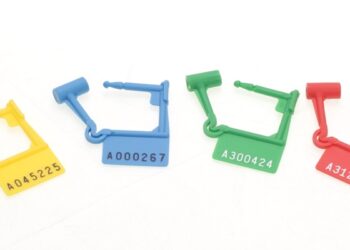ISO 17712 is an international standard that outlines the requirements for mechanical seals, specifically those used on containers and conveyances (trucks, trailers, etc.) to deter tampering and unauthorized access. These seals are crucial for maintaining the security and integrity of goods during transportation. Interpreting ISO 17712 testing results and reports is essential for ensuring the reliability and effectiveness of these seals. In this guide, we will walk you through the key components of interpreting ISO 17712 testing results and reports, providing you with a comprehensive understanding of the process.
1. Understanding the ISO 17712 Standard:
Before diving into the testing results and reports, it’s crucial to have a solid grasp of the ISO 17712 standard itself. Familiarize yourself with its sections, requirements, and terminology. This will help you contextualize the testing information and assess whether the seals meet the standard’s criteria for different levels of security.
2. Types of Testing:
ISO 17712 mandates various tests to ensure seal effectiveness. These include the following:
- Pull Test: This assesses the seal’s resistance to pulling forces. The seal should withstand a specified force without breaking or being pulled off.
- Shear Test: This evaluates the seal’s resistance to shear forces, simulating attempts to cut or break it.
- Bend Test: The seal is subjected to bending forces to determine its ability to resist bending or flexing without losing integrity.
- Impact Test: The seal is tested for its ability to withstand impact without rupturing.
3. Interpreting Testing Results:
When reviewing testing results, focus on the following aspects:
- Pass/Fail Criteria: Each test has defined pass/fail criteria outlined in the ISO 17712 standard. Determine whether the seals meet these criteria for each test.
- Testing Conditions: Consider the conditions under which the tests were conducted. Variations in temperature, humidity, or other environmental factors can impact seal performance.
- Failure Modes: If a seal fails a specific test, understand the nature of the failure. Did it break, shear, or deform? This information helps assess the seal’s vulnerabilities.
- Consistency: Analyze if the seals consistently meet the pass criteria across multiple tests. Consistency is crucial for reliable seal performance.
4. Test Reports:
Interpreting test reports requires attention to detail. Reports typically include the following information:
- Identification: Each seal tested should be uniquely identified for traceability.
- Test Methods: The specific methods used for each type of test should be detailed.
- Results: Clearly stated results for each test, indicating whether the seal passed or failed.
- Visual Evidence: Photographs or illustrations may accompany the report to visually document the seal’s condition before and after each test.
5. Comparing Different Seals:
If you’re comparing multiple seals or brands, consider the following:
- Performance: Evaluate which seals perform better in specific tests. Some seals might excel in shear resistance, while others are better at pull resistance.
- Overall Security Level: Consider how well the seals perform across all tests. A seal that passes all tests with higher force thresholds generally offers a higher level of security.
- Application: Tailor your interpretation based on the intended application. A seal used for high-value cargo might need to meet stricter criteria than one used for low-risk shipments.
6. Consult Experts:
Interpreting ISO 17712 testing results can be complex. If you’re unsure about any aspect of the results or reports, don’t hesitate to consult experts in seal technology, transportation security, or quality assurance. Their insights can help you make informed decisions.
Conclusion:
interpreting ISO 17712 testing results and reports requires a thorough understanding of the standard, the various tests involved, and the nuances of the testing process. Careful examination of testing results and reports allows you to assess the reliability, effectiveness, and level of security provided by different seals. By following this comprehensive guide, you’ll be well-equipped to make informed decisions about the selection and use of mechanical seals in accordance with ISO 17712 standards.











